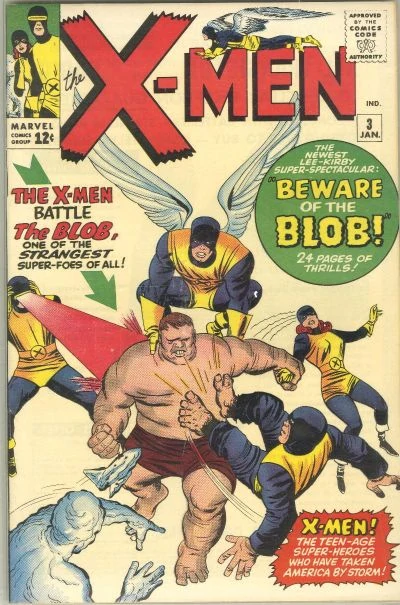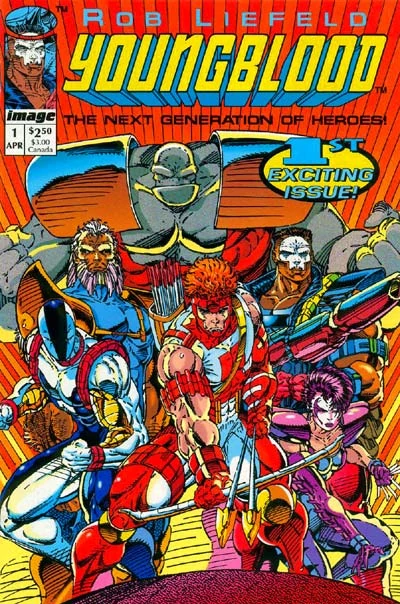Picture this: You’re sitting in a cozy corner of a bustling comic book store, flipping through the brightly colored pages of your favorite superhero story. The world of comics has been delighting readers for generations, but have you ever wondered how it all began?
Strap on your capes and join us as we take a journey through the evolution of comics. Understanding the history of comics is essential, as it helps us appreciate the countless artists and writers who have shaped this beloved medium.
Comics hold a special place in our culture, reflecting our societal values, fueling our imagination, and inspiring new generations of creatives.
The Golden Age of Comics (1930s-1950s)
When comics were just taking baby steps

The Golden Age of Comics kicked off in the 1930s with the emergence of comic book publishers like DC Comics and Timely Comics (later Marvel). These early titles featured a colorful assortment of crime fighters, detectives, and even a few supernatural beings. It was an innocent time for comics, when the only thing our heroes had to worry about was the occasional evil scientist or menacing monster.
The superhero who flew into our hearts
In 1938, a mild-mannered reporter named Clark Kent made his debut in the pages of Action Comics #1, and the world was introduced to Superman. Created by Jerry Siegel and Joe Shuster, Superman was the embodiment of hope and justice, capturing the hearts of readers and setting the stage for a new era of comic book heroes.
Comics go to war
During World War II, the comic book industry played a significant role in boosting morale and supporting the war effort. Iconic characters like Captain America and Wonder Woman fought against evil both on and off the page, solidifying their place in popular culture. But it wasn’t all sunshine and rainbows – the war years also saw the rise of darker, more mature themes in comics.
The not-so-funny side of comics
In the 1950s, concerns about the potential negative effects of comic books on young readers led to the creation of The Comics Code Authority. This self-regulating body imposed strict guidelines on content, stifling creativity and innovation in the industry. While some may argue that it helped maintain a certain level of innocence in comics, others believe it hindered the medium’s growth and held it back from reaching its full potential.
The Silver Age of Comics (1950s-1970)
The phoenix rising from the ashes
Just like the mythical phoenix, superhero comics rose from the ashes during the Silver Age. Pioneered by DC Comics and Marvel Comics, this era marked a resurgence of classic heroes and the introduction of new ones. With a renewed focus on hope and optimism, these stories captured the imagination of readers, young and old alike.

Spider-Man swings in, and The X-Men mutate the game
The Silver Age gave us some of the most enduring characters in comic book history. From the wisecracking web-slinger Spider-Man to the misunderstood mutants of The X-Men, these heroes brought a fresh perspective and a new wave of excitement to the comic book world.
The evolution of spandex
Storytelling and artwork underwent a significant transformation during the Silver Age. The simplistic, two-dimensional characters of the Golden Age evolved into more complex, multi-faceted heroes. And the artwork? Let’s just say the spandex got a whole lot flashier! Bold colors, dynamic action, and imaginative layouts became the norm, adding a level of depth and sophistication to the medium.
When comics went counterculture
The Silver Age also saw the emergence of underground comics, or “comix,” which pushed the boundaries of content and style. These counterculture creations tackled taboo subjects, experimented with unconventional art, and operated outside the constraints of The Comics Code Authority. In doing so, they paved the way for future creators to challenge the status quo and explore new frontiers in the world of comics.
The Bronze Age of Comics (1970-1985)
When superheroes got real
The Bronze Age ushered in a new era of maturity and complexity in comics. Social issues, darker themes, and real-world consequences became central to the narratives, transforming the once-invincible heroes into relatable, fallible beings. This gritty realism resonated with readers, who saw their own struggles reflected in the pages of their favorite comics.
The game changers
Two pivotal works from the Bronze Age are Watchmen by Alan Moore and Dave Gibbons, and The Dark Knight Returns by Frank Miller. These groundbreaking stories deconstructed the superhero genre and explored the darker, more complex aspects of our heroes. In doing so, they changed the landscape of comics forever.
Our heroes get a makeover
Character development and intricate story arcs became the name of the game during the Bronze Age. Heroes and villains alike underwent significant transformations, both physically and emotionally. This focus on character-driven narratives enriched the medium, elevating comics from mere pulp entertainment to a respected form of art and storytelling.
The Modern Age of Comics (1985-Present)
The comic book underdogs bite back
The Modern Age saw the rise of independent publishers like Image Comics, which challenged the dominance of industry giants like Marvel and DC. These indie powerhouses gave creators the freedom to experiment with new ideas, styles, and genres, resulting in a diverse range of stories that catered to a wide array of tastes.

From ink to pixels
Digital comics and webcomics have revolutionized the way we consume our favorite stories. From the convenience of our smartphones or tablets, we can now access an ever-growing library of comics with just a few taps. This digital revolution has democratized the medium, enabling independent creators to share their work with a global audience and paving the way for a new era of innovation.
It’s a small (comic book) world, after all
Diversity and representation have become increasingly important in the world of comics. Modern stories feature a more inclusive cast of characters, reflecting the rich tapestry of human experience. This shift has not only expanded the medium’s appeal but also created a more empathetic and understanding readership.
East meets West in a panel
The global market has seen a significant influence from manga, Japan’s unique brand of comics. With their distinct visual style and storytelling techniques, manga has captured the hearts of readers worldwide. The cross-pollination of ideas between Eastern and Western comics has led to new and exciting possibilities in storytelling, art, and character development.
The Impact of Comics on Other Media
The invasion of spandex on the silver screen
Comic book adaptations have taken the film and television industry by storm, dominating box office charts and earning critical acclaim. These adaptations have brought our favorite heroes and villains to life, introducing a whole new generation to the exciting world of comics.
Page to screen, lost in translation?
Despite their popularity, comic-based movies and TV shows don’t always stay true to their source material. While some adaptations capture the essence of the original stories, others take creative liberties that can leave die-hard fans feeling shortchanged. Nevertheless, the overall impact of these adaptations has been largely positive, expanding the reach and influence of comics in popular culture.
Holy cultural impact, Batman!
Comics have had an undeniably significant impact on pop culture. From fashion and music to art and literature, the influence of comics can be felt in every corner of our society. The iconic characters, captivating stories, and unforgettable moments from the world of comics have shaped our collective imagination, proving that, in the end, we all need heroes to inspire us.
The Future of Comics
To infinity and beyond!
Technological advancements continue to shape the comic book industry, from digital distribution platforms to innovative art and storytelling tools. As technology evolves, so too will the way we create and consume comics. The future promises to bring even more immersive and interactive experiences that will captivate readers and push the boundaries of the medium.
Are you ready, player one?
Virtual and augmented reality holds exciting potential for the world of comics. Imagine stepping into your favorite panel, interacting with characters, and experiencing the story as if you were a part of it. The possibilities are endless, and as VR and AR technology becomes more sophisticated, we can expect a new era of immersive storytelling to emerge.
Keeping the pages turning
The need for continued innovation in storytelling and artistry is essential for the future of comics. As the medium evolves, creators must continue to push the envelope, experimenting with new ideas, styles, and genres to keep readers engaged and excited. The future of comics depends on our ability to adapt and innovate, ensuring that this beloved form of entertainment remains relevant for generations to come.
Conclusion
Our journey through comic book history has shown us the remarkable evolution of the medium, from its humble beginnings during the Golden Age to its current status as a powerful force in popular culture. The importance of comics in the modern world cannot be overstated, as they serve not only as a form of entertainment but also as a reflection of our society and its values.
As we look to the future, it is crucial to remember the impact that comics have had on our lives and the lives of countless others. We encourage you to explore and appreciate the world of comics, whether you’re a seasoned fan or a curious newcomer. So, put on your favorite cape, dust off that old graphic novel, or fire up your digital device and get your geek on! The world of comics is waiting for you.











